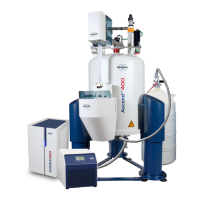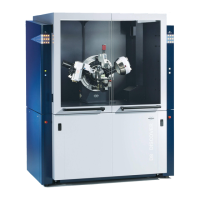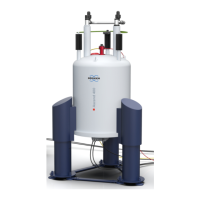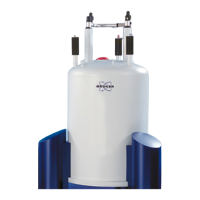Introductory Theory and Terminology
H171804E_14_001 21 / 86
3.8 FID and Spectrum
The signals emitted by the excited atoms in the sample are received by the spectrometer and
Fourier transformed by the software of the data station computer. The process of receiving
the NMR signals is called an acquisition. Data is said to be acquired. A distinction should be
made between the two terms; “FID” (time domain) and its associated “spectrum” (frequency
domain).
When an acquisition is carried out, “raw” data is acquired and the received signal is called an
FID (Free Induction Decay). A typical FID is illustrated in the figure below.
Figure3.15: Fourier Transformation
Before an FID can be usefully analyzed it must first be transformed to the frequency domain.
This is achieved by applying a Fourier transformation. A Fourier transformation is a
mathematical operation which converts the FID into a frequency spectrum. An FID is a signal
whose intensity varies with time whereas a spectrum displays how intensity varies with
frequency. Fourier transformation is the most important one of several processing operations
that is normally carried out on raw data.

